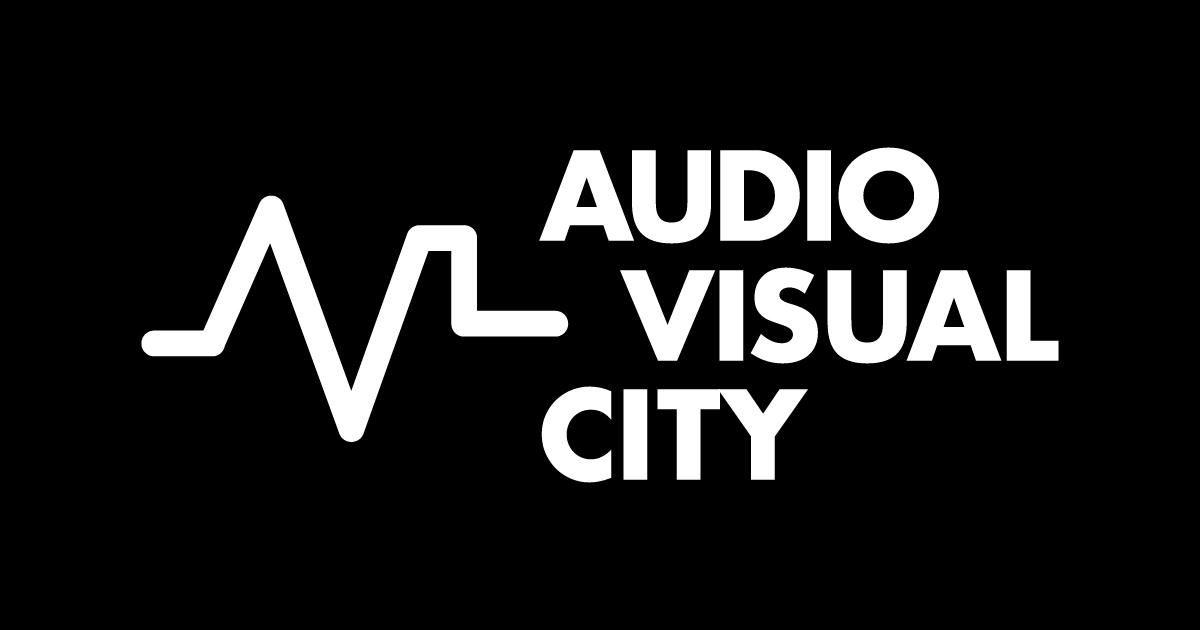Of course we couldn’t hold ourselves from interviewing this beautifully talented duo of audiovisual artists.
We have never hidden the fact we particularly love the playfulness and delicacy of their AV style. Their street art itinerant approach open the door to a myriad of creative opportunities.
Throughout the years (while keeping fit cycling their AV bikes) they have been engaging with audience of all ages and backgrounds. Here our interview to VJ Suave: enjoy it!
0. How did you meet and decide to work together on this beautiful project?
We met in 2009 in Buenos Aires, and we’ve decided to work together. Cecilia comes from animation and Ygor from painting and drawing. We mixed our best and created VJ Suave.
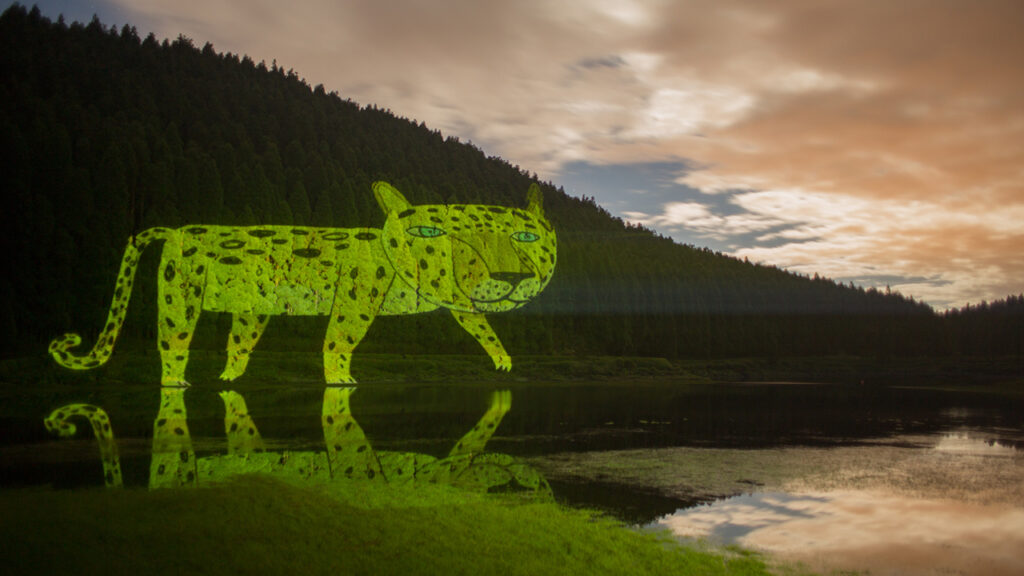
1. How have your techniques advanced since the beginning of your career? What specific technological tools have enabled you to express yourself in a different way because of this?
In the beginning, we took a class on how to use Modul8 and it blew our minds. Cecilia came up with the idea to animate Ygor’s drawings and. Using a small projector, we’ve projected the animations from the window on the street outside.
At that time, we used Adobe Flash, After Effects and Photoshop for animation. Later on we met Maki, and he introduced us to Tagtool, a tool to draw and animate in real time.
The first version of Tagtool was a DIY thing, you needed to have a wacom, arduino, knobs and sliders, ps2 controller, all connected to a computer and a controller box.
You needed to build it yourself, it was a bit complicated. Later on Maki and his crew started to develop Tagtool for iPads and we fell in love with it.
Most of our animations are made frame by frame, using Flash, and this takes time and people to work. Tagtool is easier. It’s a tool that allows us to create drawings and animation by ourselves in a short amount of time.
We also started to investigate virtual reality. In 2017 we’ve created Floresta Encantada / “Enchanted Forest”, an interactive VR experience.
The VR is a very immersive solo experience. You actually believe you are inside a different reality. In Floresta Encantada, together with our crew, we’ve created an experience where participants are teleported to a magical forest where they can interact with both characters and the scenery.
They can play instruments near a bonfire and even drink medicine from a shaman. Each experience is unique as the map is very big. Some people say that they saw a spaceship, others say they had a trip on mushrooms, experiences which are rare in the map. At thee end of the journey all travelers come back to reality with a big smile.
2. Your work with the Suaveciclo is possibly the one thing that you are most well known for in Europe. What was the original thought behind the idea and did you realise how successful the concept would be when it first occurred to you?
In 2011 we created 2 short movies, Run and Homeless. They were very experimental because it was our first time trying to move the projections. The videos have been showcased by MTV and received a great response.
We were happy and we wanted to keep doing moving projections. Instead of keeping on creating videos we wanted to try the performance format, so people on the streets could see it live.
Instead of a car, we thought of a way that could be affordable to us, first a bicycle, and then finally the tricycle as our moving base to project from.
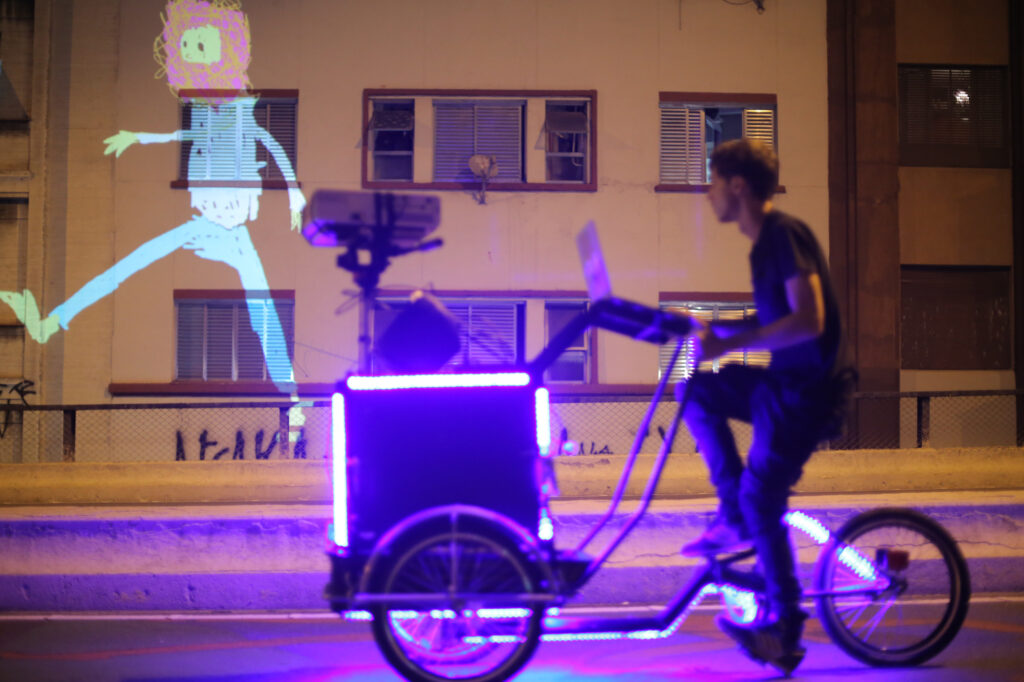
Suaveciclo was created to be able to move our animations throughout the city, bringing joy to everyone who happens to be around. As we don’t use background in the projection the characters look more alive, with a digital graffiti style.
The idea was to take the characters out of the TV screen and make this colorful universe that was inside our heads to merge it with the real world.
When we started VJ Suave back in 2009, we did a lot of research into the VJ world and, at that time, it seemed to us there was no character animation in the VJing scene.
It felt like a perfect gap for us to fit in. From then till now, we keep on doing what we love, what is true for us and we believe anything made like that will always be successful.
3. What technical issues did you encounter when you first came up with the suaveciclo setup? How do you feel about other artists using this idea in their performances?
There have been a lot of adaptations till we got to the actual version of Suaveciclo. First version was very heavy, had small sound speakers and an overall flimsy structure for the projector.
We also had issues as we bought the wrong batteries (now we only use deep cycle batteries). We now have 2 tricycles in São Paulo, one for Ygor and one for Cecilia. What we use now is actually the 5th version.
A few months ago we finally installed an electric battery to help us doing the cycling. It’s also equipped with great sound speakers and a tripod head adapted for the projector.
We like the idea of more visual artists working with images in movement throughout the city. We encourage and help people around the world to build an audiovisual tricycle to express themselves.
4. Do you remember what first drew you to the audiovisual world? What do you think you would be doing now if you hadn’t discovered the art of video projection?
Ygor: VJ Suave was the starting point for me. Thanks to that I developed my career in animation, creative technology, virtual reality and music. If it wasn’t for it I would still be doing graffiti on the city walls, or maybe working in the forest.
Ceci: I would be applying technology to some other area, maybe holistic health.
5. How is the world of video art in Brazil? Is there a big scene, or is it something quite unusual? Is there anything about your artistic context that you feel influences your work?
Nowadays it is blooming. During the isolation, many audiovisual artists from all over Brazil started to project videos on building walls outside their windows. They have come together and created a group called Projetemos. Thanks to this group, we can share our animations to be projected in different cities.
Great artists have come out of Brazil like VJ Spetto, VJ Vigas, United VJs, and there’s definitely a scene for vjing and videomapping!
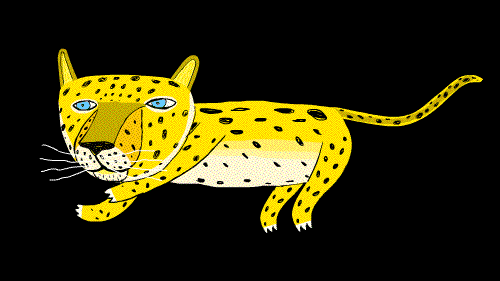
6. What has been the most exhilarating experience or biggest achievement for you? What are you most proud of?
We are proud of having been able to show our art in more than 20 countries at different kinds of audiovisual events: film, street art, animation, music, bike, art technology and light festivals.
If VJ Suave had a little bit of each event, we would be defined by this mix which is something new with technology, animation and movement.
With Suaveciclo we can create magical moments. We gather people to see the city in a different way, more imaginative. We colour the path with light, expressing love. We think this can open people’s hearts, at least for a second.
7. A lot of your animation work has an infantil theme with bright colours, organic shapes and friendly faces. Would you say that children are your main audience, or at least, that they are who you most have in mind when you come up with the narratives for your work?
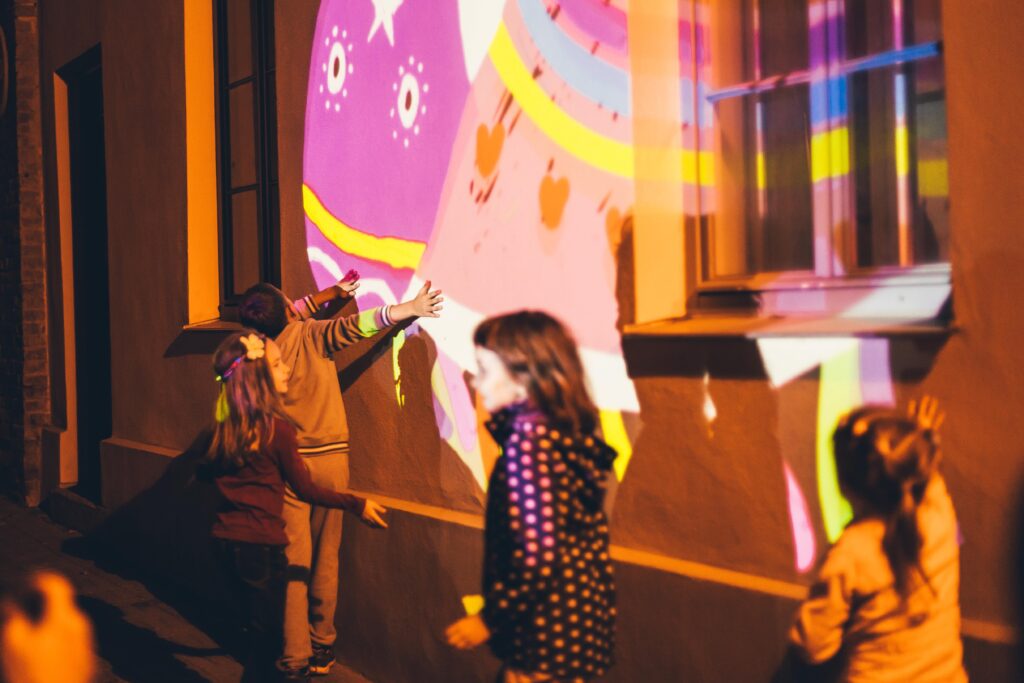
We don’t have a specific audience in mind. We create what we are able to express. Sometimes it is naive with simple forms, sometimes it can be more complex.
Regarding the colours, we have the limitation of the projector. For Suaveciclo performances we carry a 5.500 lumen projector, which is very bright and powerful for a tricycle. However darker colours can be difficult to project. That’s why our colour pallet is always bright, with high contrast and saturation.
Kids are essential for our performances, because they appreciate magical beings. They want to play with the characters. When they do, adults start to believe in that magical moment too: when kids are yelling and chasing our enchanted characters.

